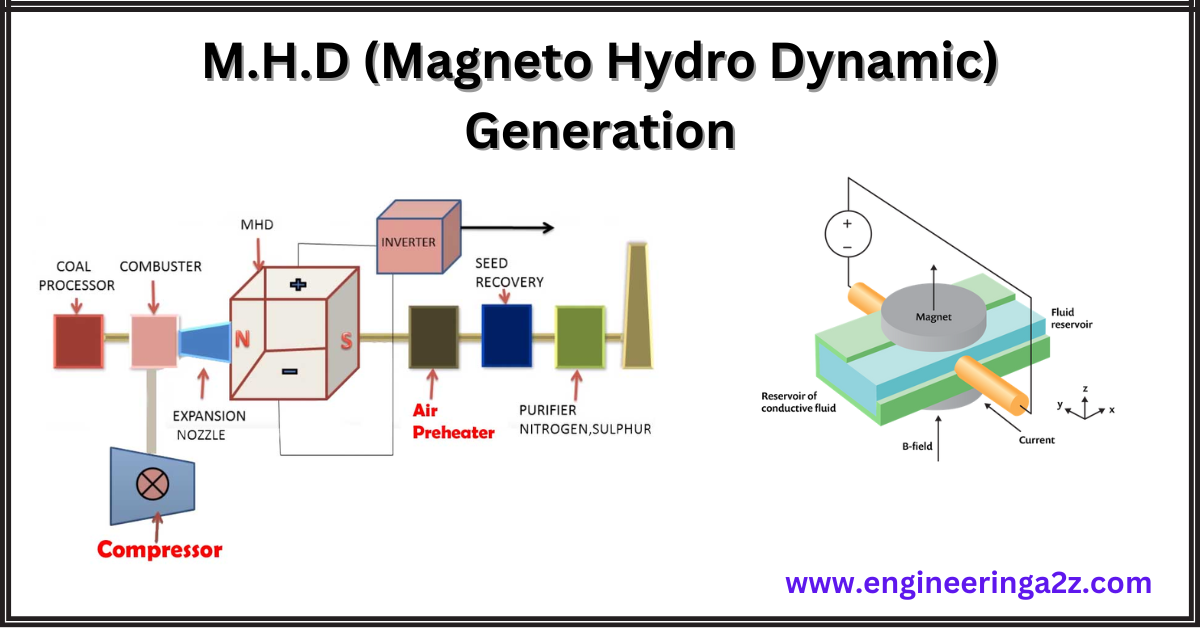
Table of Contents
MHD Generator
An MHD (Magneto Hydro Dynamic) generator is a device that converts the energy of a high-temperature, ionized gas or plasma into electrical power through the interaction between magnetic fields and electrically conductive fluids. The basic principle behind an MHD generator lies in the fundamental laws of electromagnetism and fluid dynamics. It includes a technique in which heat is directly converted into electricity. It is based on Faraday’s law of electro-magnetic induction but it produces only D.C. power. The efficiency of MHD is high around 60% because there is no moving part in it.
Working of MHD Generator
It work on the Faraday’s law of electromagnetic induction i.e, When a conductor is placed in magnetic field changes across it, an emf (voltage) is induced in it which produces an electric current. This is also the principle of conventional generator in which conductor consists of copper strips wires. In MHD generator, conductor is replaced by ionized conducting gas or fluid. If this gas is passed at high speed through a powerful magnetic field, an electric current is generated and can be taken by placing electrodes in suitable position as shown in Figure.

As shown in figure combustion chamber heats up the substance like Potassium or Cesium to become vaporized and is ionized at low temperature. Due to ionization of gas negatively charged electrons make the gas to conduct. Another way is to use liquid metal instead of gas. Hence conducting gas or liquid metal work as a fluid MHD. When this conducting gas or liquid metal flows through magnet an emf (voltage) is induced. Nozzle increase the velocity of fluid. Electrical equivalent circuit of MHD given below
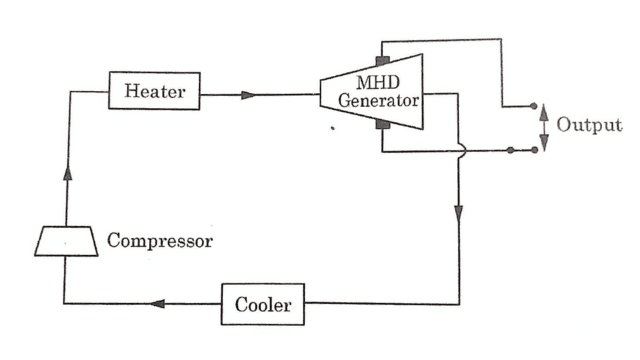
Here compressor is used to raise the pressure in same way as in a Nozzle. In MHD generator conducting fluid always flows at right angle to the magnet magnetic field. The direction of induced emf is perpendicular to the both the direction of fluid flow and direction of magnetic field as shown in Figure
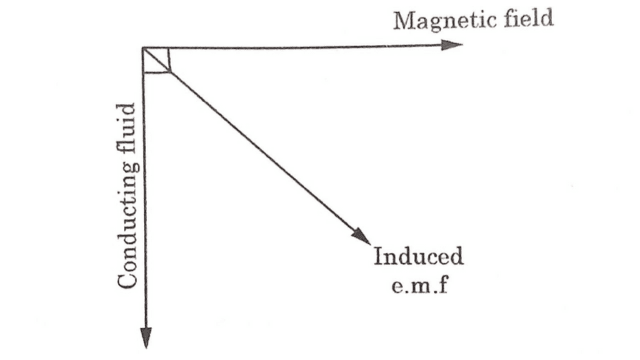
Types of MHD Generation
There are two types of MHD power generation system
- Open cycle MHD power generation system
- Closed cycle MHD power generation system
1. Open cycle MHD power generation system
Combustion chamber burns the fuel in presence of Oxygen ( O2 ) at 1000o C. This hot and pressurized fluid ionizes the gas. Then gas is passed through a nozzle to increase its velocity. MHD duct is a MHD generator that produces DC power. AC Power can be obtained by using inverter.
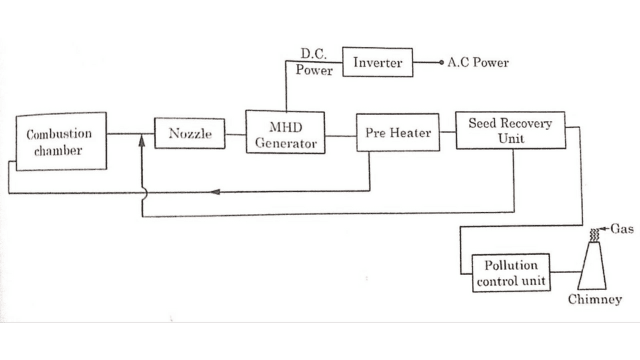
Pre Heater heats the gas upto 2300°C. that returns back to combustion chamber. Seed recovery unit recovers the seed and sends it back to seeding unit. Remaining hot gasses are exhausted through chimney after removing its toxicity or dust particles
2. Closed cycle MHD power generation system
In closed cycle MHD system conducting fluid is used again and again to form a closed cycle instead of exhausting the fluid in atmosphere. Combustor and heat is used to heat the Argon or Helium gas at 1900°C. This gas is passed through MHD generator to produce the electricity. Outgoing gas is slowed down by diffuser and cooled into pre cooler. Compressor feeds the pre cooled gas into combustor and heater is used for heating.
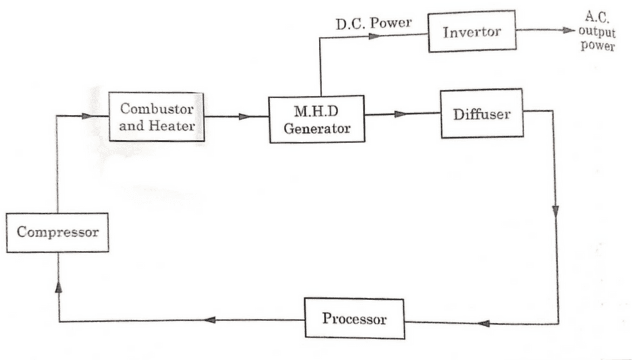
Advantages of MHD Generation
- Efficiency of MHD Generator is around 60%
- It generates large amount of power
- It is renewable source of energy
- It is more reliable
- It is pollution free generator
- Cost and size of plant is small
Disadvantages of MHD Generation
- There is problem of availability of conducting gas or any other fluid
- Difficult to fabricate MHD generator.
Frequently Asked Questions FAQs:-
What is MHD generation?
MHD generation refers to the process of converting the kinetic energy of a high-velocity plasma or fluid into electrical energy using magnetohydrodynamic principles.
How does MHD generation work?
MHD generation involves passing a conductive fluid or plasma through a magnetic field. As the fluid moves across the magnetic field lines, an electric current is induced, which can be extracted to generate electricity.
What are the advantages of MHD generation?
Some advantages of MHD generation include high energy conversion efficiency, fuel flexibility, reduced greenhouse gas emissions, and the potential for high power density.
What are the applications of MHD generation?
MHD generation can be used in various applications, such as power plants, space propulsion systems, and electromagnetic launch systems.
Are there any existing MHD power plants?
Yes, several experimental MHD power plants have been built and operated, but full-scale commercial implementation is still limited.
Read Also:
- DC Generator | Construction and Working Principle
- Thermal Power Plant | Working | Advantages and Disadvantages
- What is Solar Cell or Photovoltaic Cell
- Modern Grid | Characteristics and Functions







Leave a Reply